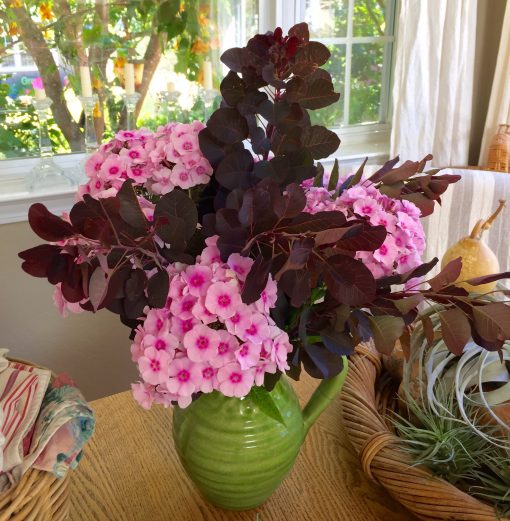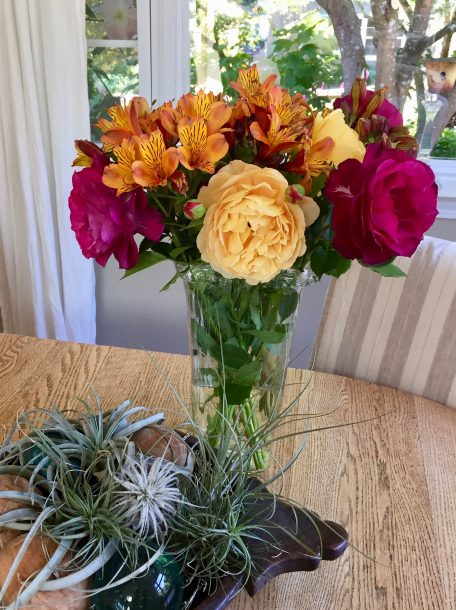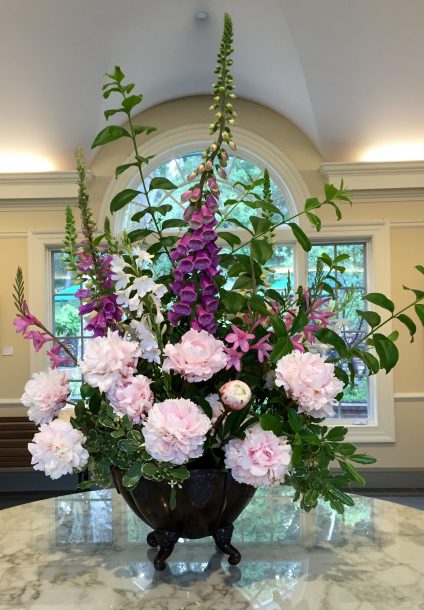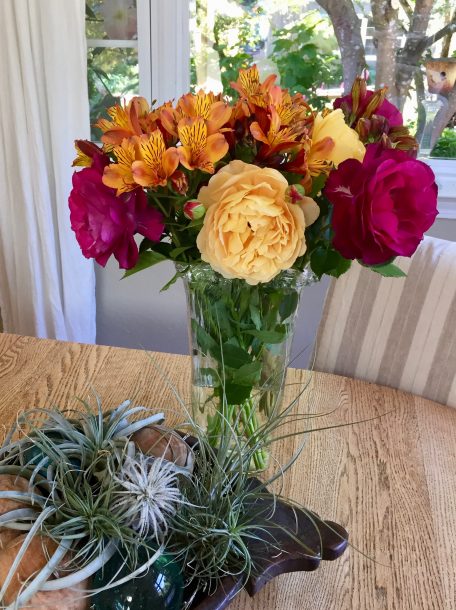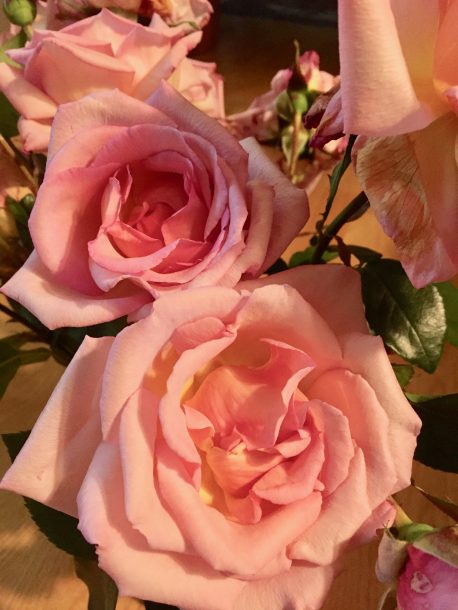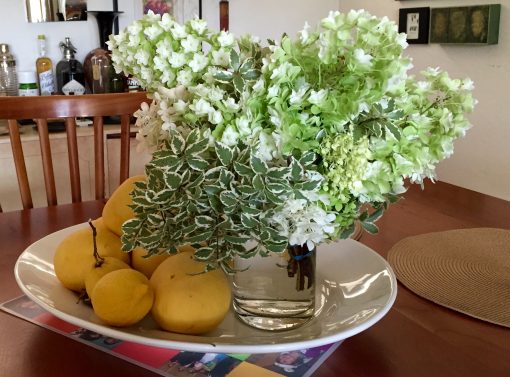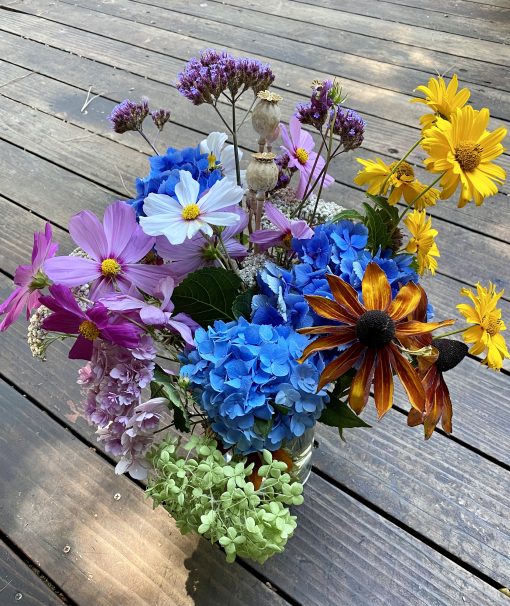
rudbeckia, yarrow and cosmos.
Several of my friends have big gardens. Gardens that are big enough to have lots of blooming flowers that can be cut and barely make a dent in the riot of color in their garden. The other day I recieved a huge mixed bouquet. It’s spectacular. If you’ve always wanted a garden like this here are some tips for the best perennials and annuals to grow for cutting.
Don’t have much space to devote to a cutting garden? No problem. Although we all dream of a dedicated spot in the garden set aside for growing masses of flowers and foliage for bouquets, it’s not a necessity. Many great plants for cutting can just as easily be grown in raised beds, containers and between shrubs. So whether you prefer formal floral bouquets or casual, deconstructed flower and foliage arrangements let your imagination run wild and grow plants that make either easy to put together.
While just about any plant material that strikes your fancy will work in a mixed bouquet there are four types of plant forms that naturally look good together. First are the spires for height and architectural properties. Flowers like liatris, snapdragon, gladiola, salvia, Bells-of-Ireland as well as the strappy leaves of New Zealand flax or cordyline fall into this category. Secondly are plants and foliage with a round form for focus such as roses, dahlias, long-stemmed marigolds and peonies. Last are the lacy accents for fillers- ferns, baby’s breath, dill and foliage from shrubs such as abelia, breath of heaven, smoke bush, Japanese maple and ornamental grasses. Grapes and other vines and herbs are also good as accents.
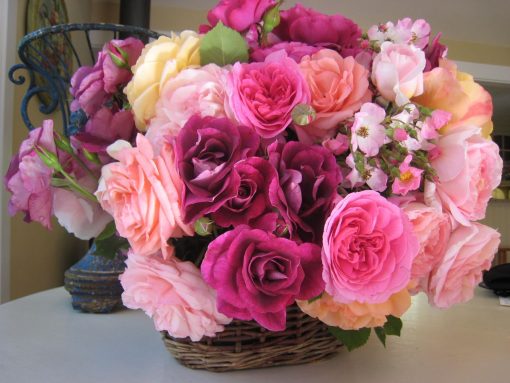
A deconstructed arrangement separates each type of flower into their own vase or container instead of grouping them in a mixed bouquet. Vary the size and shape of the vases and containers and group them together to create a unique vignette.
In shady gardens, fragrant daphne odora is a wonderful small shrub that provides interesting variegated foliage as well as flowers. Sweet olive or osmanthus fragrans blooms smell like apricots. Oakleaf hydrangea foliage and flowers look great in bouquets and the leaves turn red in fall which is an added bonus. Our native shrub philadelphus, also called mock orange, has flowers that smell like oranges and will grow in some shade as well as sun. Pittosporum ‘Marjorie Channon’ will add white with a hint of lime to your bouquets.
For sunny spots grow penstemon and kangaroo paw. Coreopsis attract butterflies and are long lasting in bouquets. Perennial coneflowers, dahlias, gloriosa daisy, delphinium, foxglove, scabiosa, aster, shasta daisy and yarrow are good as cut flowers.
Self-sowing annuals that have a long vase life are bachelor buttons, clarkia, cosmos, flax, love-in-a-mist, nasturtium, cleome and calendula. Annual flowers such as zinnia, lisianthus, snapdragon, statice and marigolds are great in containers where you can make every drop of water count and are also good for cutting.
Native flowers that last for a week or more include Clarkia and Sticky Monkeyflower. Yarrow and hummingbird sage will last 4-6 days.
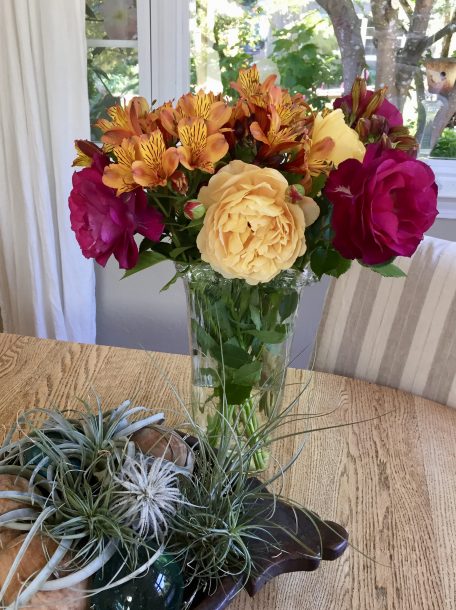
To make cut flowers last, pick them early in the morning before heat stresses them. Flowers cut in the middle of the day will have difficulty absorbing enough water. Cut non-woody stems on a slant for maximum water absorption. Woody stems can be cut straight across but smash the ends. Plunge immediately in a bucket of tepid water. Indoors, fill a container with cool water and recut each stem under water so an air bubble doesn’t keep the water from being absorbed.
Pull off any foliage or flowers that will be below the water level in the vase. Fill a clean vase with 3 parts lukewarm water mixed with 1 part lemon-lime soda, 1 teaspoon vinegar and a crushed aspirin. Another recipe for floral food is 2 teaspoons sugar, 2 tablespoons white vinegar and 1/2 teaspoon bleach in 1 quart water. The sugar helps buds open and last longer, the acid improves water flow in the stems and the bleach reduces the growth of bacteria and fungus. Change the water and recut the stems every few days to enjoy you bouquets for a week or maybe even two.

